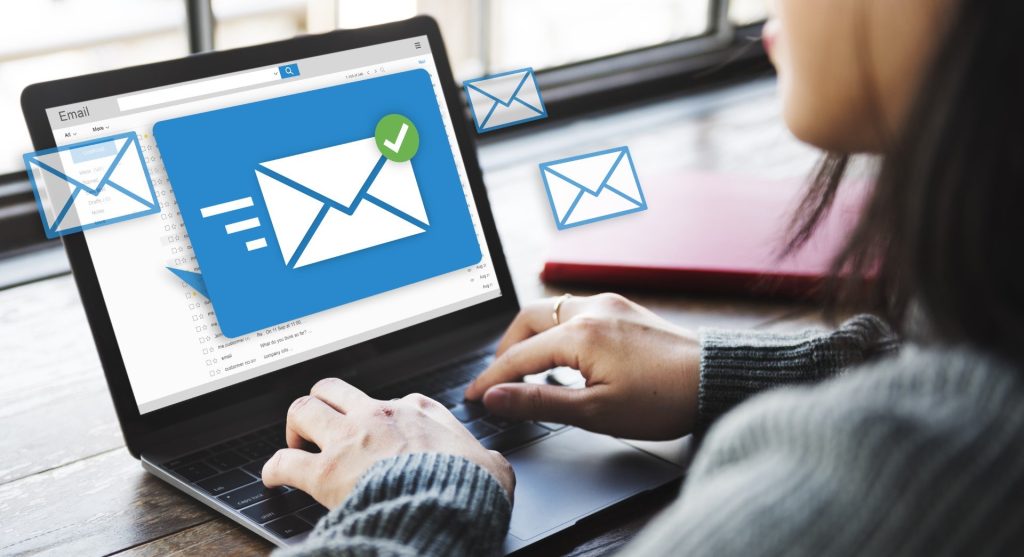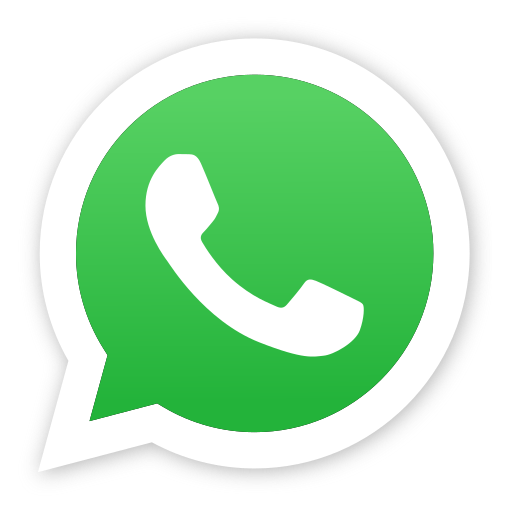The Complete Guide to Writing Effective Emails
Email may not be as flashy as social media, but it has proven time and time again to be a truly effective method of securing leads and growing your business.
In fact, 59% of marketers say that email marketing is their biggest return on investment. Furthermore, 59% of customers say that marketing emails influence their purchasing decisions.

Why Emails?
Why are emails so effective? Contrary to popular opinion, emails are not simply spam. They provide an authentic connection with the customers who are responsible for sustaining fledgling businesses.
Such connections are often quite rare in the marketing business, which is exactly what makes the medium so effective. The very first marketing email, sent in 1978, generated $13 million sales!
Unless you have the resources and time to individually build a personal relationship with each prospective customer, email marketing is among the best marketing tools in your arsenal.
How Does Email Marketing Work?
Email marketing targets your audience through a strategic series of emails that provide subscribers and customers with valuable information about your brand and business, which in turn, help them achieve their goals.
Emails are particularly effective for building relationships, boosting your brand awareness, promoting your content, generating leads, nurturing leads, and marketing your product. With over 3.8 billion email users worldwide, there is no shortage of prospective customers you can connect with!
To give perspective on how effective email marketing is, check out these stats:
- On average, for every dollar you spend on email campaigns, you will receive $38 dollars in return, which is a 3800% return on investment.
- Two thirds of customers have made a purchase as a direct result of an email marketing message.
- Email has been found to be 40 times more effective than Facebook and Twitter combined! Considering that you own your personalized email channel, there is no external entity regulating how or when you contact subscribers, meaning you have full control over your own marketing strategy.

Getting Started with Email Marketing
Convinced that email marketing is the right step for your business? The next step is planning your strategy! With so many possibilities, it is easy to get overwhelmed. However, there are a few key strategies that can help you narrow your focus for best results.
1) Identify Your Audience
Your customers are likely receiving dozens, if not hundreds, of emails per day. To ensure your email does not immediately end up in the trash, message content must be relevant to your customers’ wants and needs. Before even writing a word, define your buyer persona and determine what they are looking for.
2) Identify Your Own Goals
What are you expecting to gain from your email campaign? Before establishing a set list of goals, it is always worthwhile to do some research in your industry and gather context. This will allow you to benchmark your goals and work to build an increasingly successful email marketing campaign.
3) Create Your Email List
Obviously, you’ll need potential customers to send your emails to! We’ll later discuss how to develop this list, but it is initially very important to create several means for prospects to opt-in to receiving emails from you. This list may be small at first, but with intentionality, it will grow into a list that is as valuable as gold for your company.
4) Select Your Type of Campaign
What will you be sending your subscribers? There are an unlimited number of options, from newsletters to product announcements and blog posts. Which type of content is the best fit for your campaign goals, your customer needs, and the growth of your business varies widely. There is no “one-size-fits-all” campaign type, and largely, what you decide to focus on is relatively subjective. However, you can create options for your prospects to select which kind of emails interest them, allowing you to tailor your content accordingly.
5) Set a Schedule
For consistent results, you’ll need to create a consistent content schedule. Be upfront with prospects about how often they should expect to see content. By consistently meeting their expectations, you’ll build trust and also ensure you’re never far from their minds.
6) Measure Your Results
Are you meeting your campaign goals? Are emails increasing your number of leads? The only way to know for certain is to keep track of the data religiously. Keeping track of every key metric will help you tailor your approach to yield best results. If something isn’t working as well as it could but you are closely monitoring the data, you can catch the problem quickly and set your campaign back on track for success.
How to Build Your Email List
Step 3 – building a list of prospects to receive your content – is a foundational part of your overall campaign strategy. Yet it can be a daunting task for those who are just getting started. However, once you identify the best strategies for attracting eager prospects, it is a real joy watching your list grow!
There are several creative ways to build your list, though all of this boils down to two key elements: lead magnets and opt-in forms.
Lead Magnets
A lead magnet is essentially an offer that attracts prospects to opt-in to your email list.
Now more than ever, people are very protective of their personal information, so they are unlikely to give away their email address without the promise of something valuable in return. This may include an eBook, whitepaper, infographic, report or study, checklist, template, webinar or course, or tool of another kind.
These resources, when providing useful and relevant information, might be just the hook to convince potential prospects to give you their contact information. Ideally, your lead is something that will lead to a paid solution.
You can think of the content as a “teaser” of sorts, showcasing just what you have to offer, and enticing customers to purchase the full package.
Opt-In Forms
Another effective strategy is offering an enticing opt-in form. This form might appear on your homepage or unlock certain web pages that are of interest to the reader.
Whatever form it takes, it should stand out from the page, be branded, attractive, and simple. Be honest with your prospects about what you are offering, and don’t require too much information from them at the start.
And while it might seem counterintuitive, most subscribers prefer a confirmed opt-in over a welcome email. So, to please your prospects, be sure that your opt-in form requires a double confirmation.
Writing Effective Sales Emails
Now, for the most important part. You have your strategy and a list of subscribers. All you need is some fantastic content to send them.
While you have probably sent quite a few emails in your life, writing a sales email requires a slightly different mindset and can be significantly more difficult to get right. The payoff, however, is definitely worth the effort!
There are many types of sales emails, and each one requires a slightly different approach. There are some general rules that apply to each of them, however, and are necessary to keep your writing clean and tight to ensure your prospects are focused on the main message of your material.
1) Leave No Room for Error
Whether we’re talking about a misplaced comma or an incorrect date, either mistake can leave a bad first impression upon the reader. Always be sure to proofread your emails with a fine-tooth comb to catch grammar or spelling errors as well as anything that might be factually incorrect.
With such a limited opportunity to make a positive first impression, there’s little room for error.
2) Keep it Short and Simple
Opening an email to find a thick block of text will deter almost any reader. Keeping your emails short and sweet without sacrificing any critical information is the best way to go.
In case your email needs to convey a lot of information, you can make the content more palatable by bolding, underlining, or italicizing important points and dates. Likewise, you can use bullet points and break up blocks of text into smaller paragraphs.
3) Speak to the Reader
Your writing style will set the tone for the entire email. If you write in a cold and clinical way, referring to the customer in the third person, that will be an automatic turn-off.
Use the prospect’s name strategically throughout the email and refer to him or her as “you” the rest of the time to make things more personal.
4) Explain Your Reasoning
In your call to action, it’s not enough to tell the readers to do something. Whenever you suggest a point of action, be sure to follow up with a good reason why.
Instead of saying you want to meet with them, for instance, consider taking a more subtle approach and say you’d like to determine how your company can help your prospect.
5) Back Up Your Claims with Data
Wherever possible, include facts and statistics to strengthen any statements you make in sales emails. This builds credibility and a quantitative means of demonstrating the value of your products or services.

Examples of Emails
These basic tips should be applied to all sales emails; however, there are specific strategies for each kind of email you might need to craft for your prospects.
Sales Prospecting Emails
This is an unsolicited email where you are trying to establish a connection with a prospect. Because the relationship is not yet established, you have a limited opportunity to make a first impression!
Your first email should draw a connection between you and your prospect, and it must provide immediate value. Give a reason for reaching out and offer your services as a means of supporting your prospect.
Finish with a call-to-action that is aligned with your prospect’s buyer stage.
[View an Example of a Sales Prospecting Email]
Sales Follow-Up Emails
Your prospect has not followed up with you, and you are reaching out one more time. They might have deleted your email, forgotten about it, or simply missed it.
Your best shot to grab their attention this time around is through an eye-catching subject line and a hook. Provide value to the prospect so that they are compelled to maintain content. Then, give next steps that make it simple for the prospect to follow through.
[View an Example of a Sales Follow-Up Email]
Sales Breakup Emails
It’s the end of a relationship. How do you end things on a positive note while still leaving the possibility of rekindling the relationship in the future?
Such emails should be short and sweet. The tone should be professional, and there should be no hint of frustration, which can easily burn bridges.
Give prospects a final option to keep the relationship open or to end it (eg, a response to “Close my file” or “Keep it open!”)
Call Summary Emails
When making a discovery call, not every stakeholder is likely to attend. If it turns out to be a bit fit, then the call ends up being a waste of their time.
However, at the end of every call, you should ask who to include on your recap email. Then, CC these individuals to introduce yourself and start a conversation. This email should include high-point information and clearly-defined next steps.
Sales Handoff Emails
Once your prospect has made a purchase, you want them to feel assured that they have made the right choice and that whoever will be assisting them from that point on is truly there to assist them.
A sales handoff email should include an introduction to your post-purchase team and a reassurance that you will always be there to assist them. The point of this email is to ensure the prospect is convinced they have made the right choice!
Post-Sale Progress Check-In Emails
Every so often, it is important to check in with prospects to ensure they are having a positive experience.
Offer your support and ask specific questions to ensure that ll aspects of their experience are positive thus far and that your products are helping them accomplish their goals. If prospects are having any difficulties, you will be right there to help them through the process.
Upsell and Cross-Sell Emails
If your product has not brought your customer success yet, emphasize their track record of success to build confidence that your product will indeed work for them in the future.
Additionally, emails can be a means of discerning whether their goals have changed, and it gives you an opportunity to make strategic recommendations.
Request-for-Sales-Referral Email
Once your customers have achieved success using your products, it may be appropriate to ask for a referral. You can provide a referral email template to make it easier for your prospects to oblige.
Though there are certainly more variations of sales emails, these are some of your most basic forms, which can be adapted to meet your prospects’ needs.
A flexible and personalized approach is important for all of your emails and is one of the main factors that makes these mediums so effective at generating leads and growing businesses!
Once your content is in place, you should select an email marketing service which will help you avoid your prospects’ Spam box. It is also advisable to segment your email list. This ensures that prospects will only receive the information most relevant to them, based on their needs and interests.
Use Your Emails to Your Advantage
While all the do’s and don’ts of email writing may seem daunting, at its core, email marketing is quite simple. Humanize your prospects, and you can expect significant results!
Email marketing can be incredibly effective, but it can also be very time-consuming. If you want the help of an industry expert to craft engaging and impactful content for your email list, WriterArmy can help.
Our team has combined decades of experience in email content creation and can create effective email content for increased engagement and heighted conversion rates. Our services are scalable and cost-effective to meet the needs of any business.
Learn more about our professional monthly email writing service where we offer low cost monthly subscriptions to ensure that your email content is going out consistently, or contact us for a free custom quote.
Ready to Grow Your Business?
Take the first step in building extraordinary content together. Reach out to a content marketing strategist today and get ready for takeoff.

